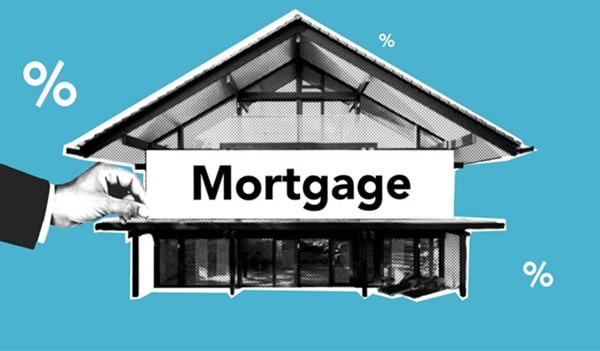Buying a home is a major financial decision, and selecting the right mortgage loan can make a big difference in your repayment journey.
With so many options available, it’s essential to understand the different types of loans and how they fit your financial situation.
Whether you’re a first-time homebuyer or looking to refinance an existing loan, having the right information can help you make an informed choice.

Understanding Mortgage Loans
A mortgage loan is a secured loan where the property acts as collateral. Borrowers repay the loan in fixed monthly instalments over a set period. The interest rate, loan tenure, and type of mortgage determine the total cost of borrowing.
Lenders evaluate an applicant’s income, credit score, existing debts, and repayment ability before approving a mortgage loan.
While interest rates and terms vary across financial institutions, choosing the right type of mortgage ensures a smooth repayment experience.
Types of Mortgage Loans
Each homebuyer has different financial needs, and selecting the right loan depends on factors like repayment capacity, tenure, and property type. Below are some common types of mortgage loan options available:
1. Fixed-Rate Mortgage Loan
A fixed-rate mortgage loan has a constant interest rate throughout the loan tenure. The EMI remains unchanged, making it easier to plan finances. It is suitable for borrowers who prefer stability in repayment amounts.
- Best for: Those who want predictable EMIs and no fluctuations in interest rates.
- Drawback: Fixed rates may be higher than floating rates at the time of loan sanction.
2. Floating-Rate Mortgage Loan
In a floating-rate mortgage loan, the interest rate changes based on market conditions. If the benchmark interest rate increases, the EMI goes up, and if it decreases, the EMI comes down.
- Best for: Borrowers who expect interest rates to drop in the future.
- Drawback: Monthly EMIs may fluctuate, making budgeting slightly difficult.
3. Home Construction Loan
This loan is for individuals who want to build a house instead of purchasing a ready-made property. Funds are disbursed in phases based on the construction progress.
- Best for: Those who own land and want to construct a house in stages.
- Drawback: Requires periodic approvals before fund disbursement.
4. Interest-Only Mortgage Loan
Here, borrowers pay only the interest amount for a fixed period before starting principal repayments. It helps reduce EMI amounts in the initial years.
- Best for: Individuals expecting a rise in income in the future.
- Drawback: Higher total interest cost over the entire tenure.
5. Mortgage Loan for Refinancing
Refinancing allows borrowers to shift their existing mortgage loan to another lender for better interest rates or terms. It helps save on interest costs and reduces EMI amounts.
- Best for: Those with existing loans who want better terms.
- Drawback: Prepayment charges may apply depending on the lender.
Factors to Consider When Selecting a Mortgage Loan
Selecting the right mortgage loan requires careful evaluation of financial needs and loan terms. Here are key factors to keep in mind:
- Interest Rate Type – Fixed or floating rates impact EMI calculations and overall repayment.
- Loan Tenure – Longer tenure reduces EMI but increases total interest paid.
- Down Payment Requirement – Lenders finance a percentage of the property’s value; the rest must be paid upfront.
- Processing Fees – Additional costs like processing fees, legal charges, and documentation fees can add to the overall expense.
- Prepayment Charges – Some lenders levy penalties on prepayment or foreclosure.
- Eligibility Criteria – Credit score, income, job stability, and existing debts influence loan approval.
Assessing these factors helps borrowers pick the right mortgage loan that aligns with their financial goals.
Documents Required for Mortgage Loan
A mortgage loan application requires specific documents for verification and approval. Below is a checklist of the documents required for mortgage loan processing:
- Identity Proof – Aadhaar Card, PAN Card, Passport, or Voter ID.
- Address Proof – Utility bills, Rental Agreement, or Passport.
- Income Proof – Salary slips (for salaried individuals), Income Tax Returns (for self-employed).
- Bank Statements – Last 6-12 months of transactions to verify financial stability.
- Property Documents – Sale deed, Title deed, or Allotment letter.
- Loan Application Form – Duly filled and signed with personal and financial details.
Submitting accurate and complete documents required for a mortgage loan speeds up the approval process and prevents unnecessary delays.
Tips for Getting the Best Mortgage Loan Deal
Borrowers should take certain steps to secure the best possible mortgage loan terms:
- Improve Credit Score – A higher score increases approval chances and fetches lower interest rates.
- Compare Loan Offers – Evaluate multiple lenders to get the best deal.
- Opt for a Shorter Tenure – Reducing tenure cuts down on total interest paid.
- Make a Higher Down Payment – Paying more upfront lowers the loan amount and reduces EMI burden.
- Check for Hidden Charges – Ensure clarity on processing fees, foreclosure charges, and legal costs.
Careful planning ensures borrowers get a mortgage loan that suits their budget and financial stability.
Final Thoughts
Choosing the right mortgage loan is an important step in securing your dream home without unnecessary financial strain.
By understanding loan options, evaluating key factors, and ensuring all documents required for a mortgage loan are in place, borrowers can enjoy a smooth loan approval process.
Taking the time to compare interest rates, repayment tenures, and lender terms will help in securing a deal that aligns with long-term financial goals.
Hina Abbasi is Editor and a passionate sports and entertainment content writer at WinnersMaze.com. Hina’s expertise spans across a wide range of sports, and interest in many TV shows allowing her to deliver insightful analysis and compelling stories that resonate with readers.

